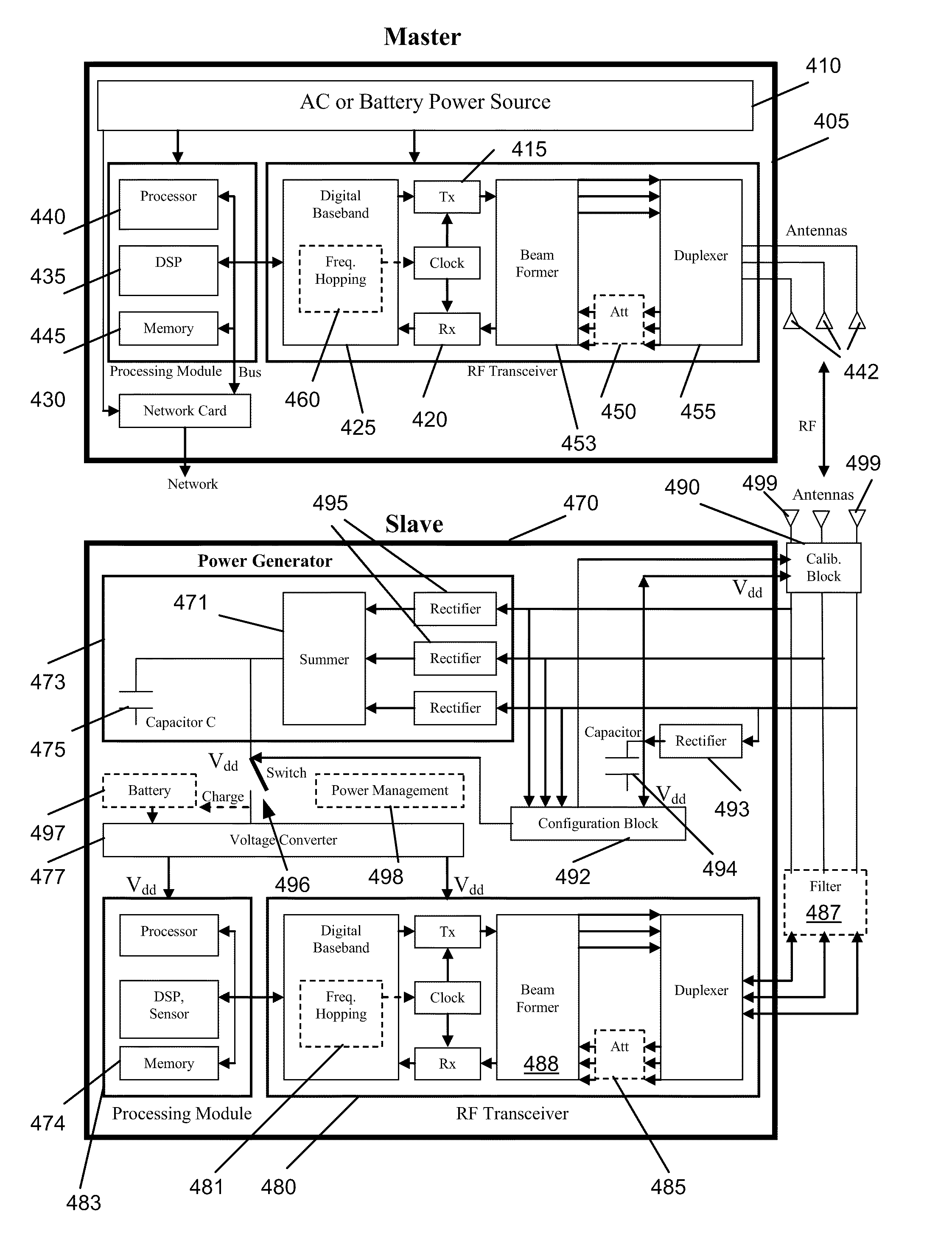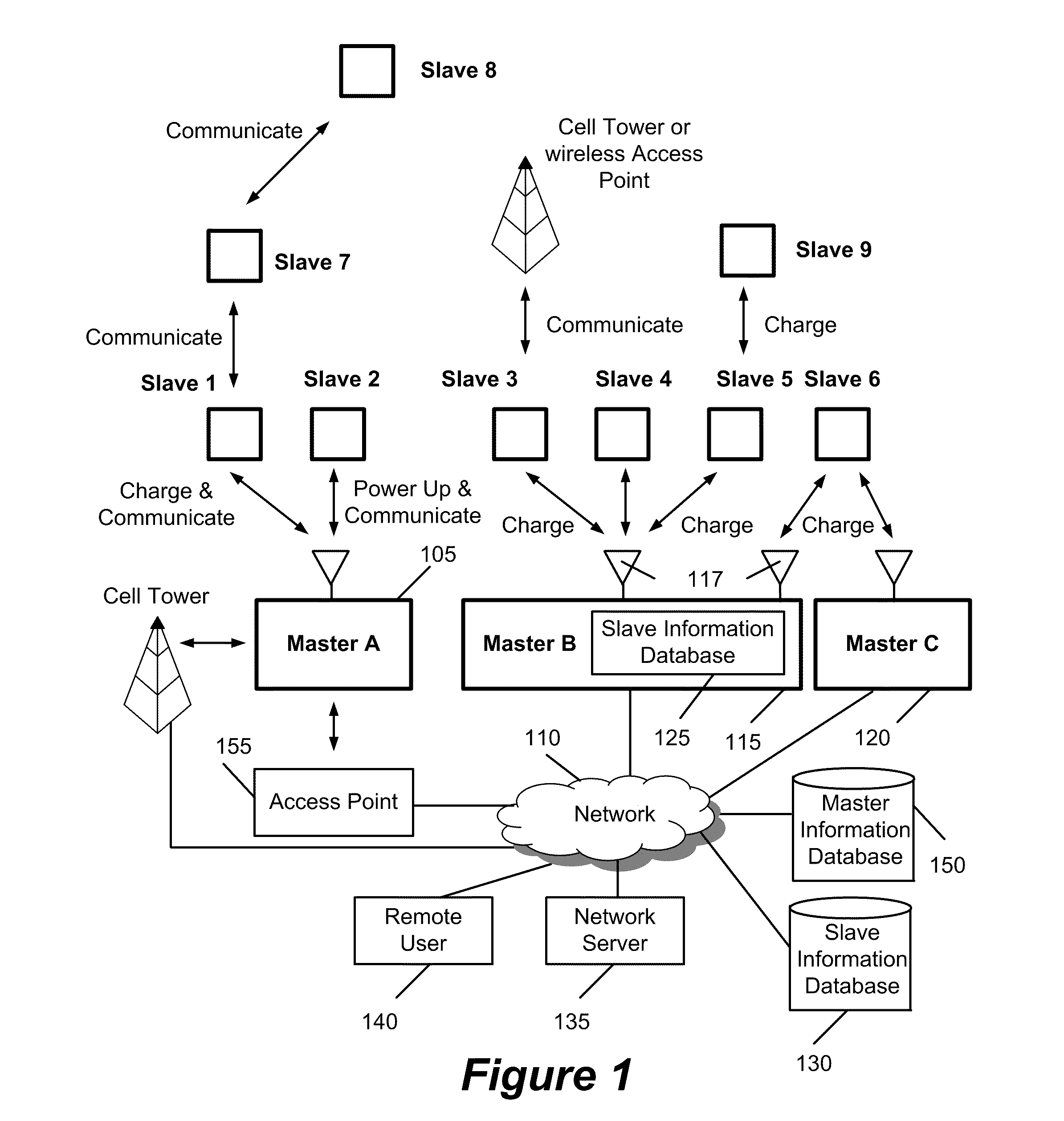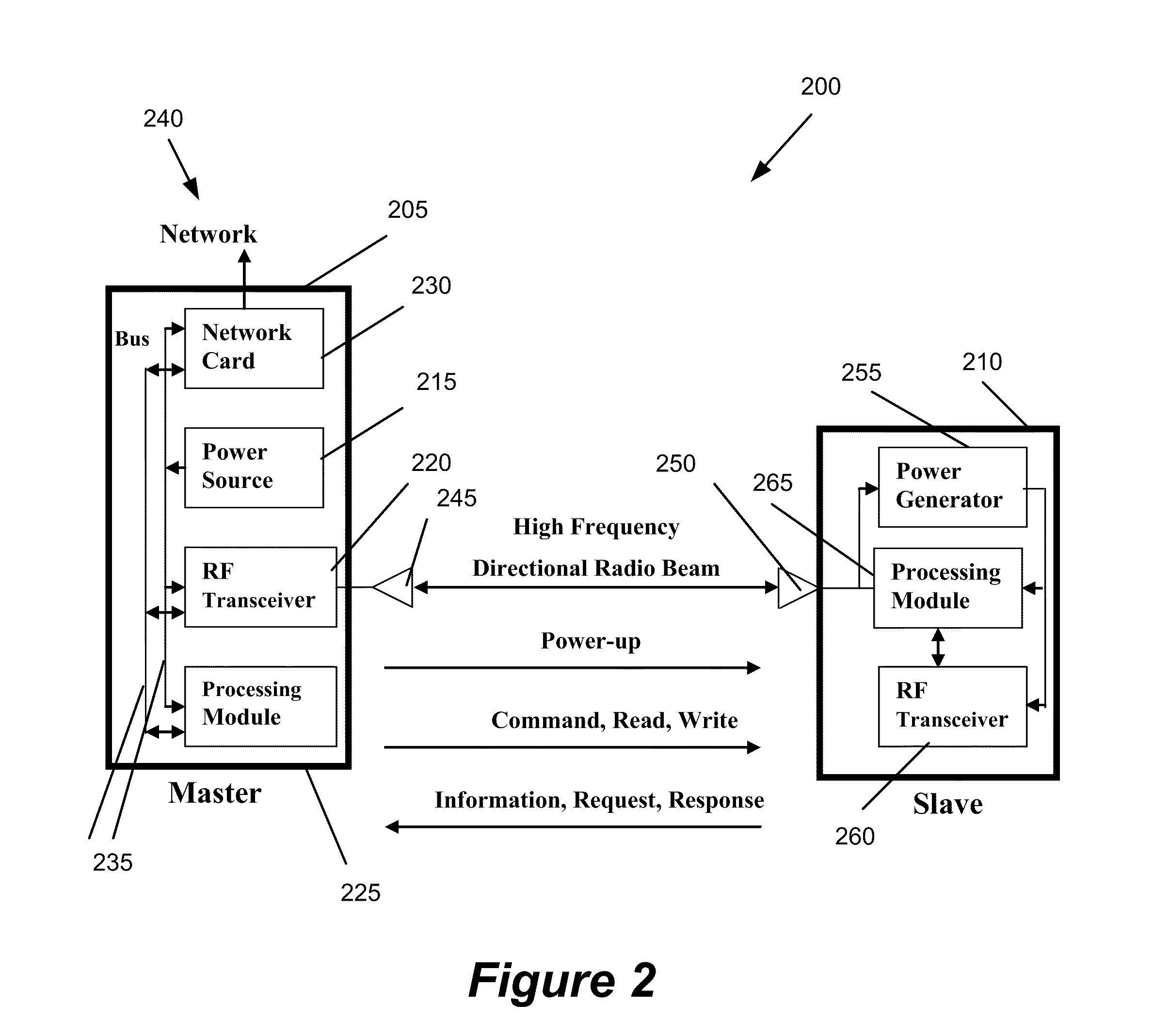Method and apparatus for wirelessly transferring power and communicating with one or more slave devices
a wireless transmission and slave technology, applied in electrical apparatus contruction details, safety/protection circuits, transportation and packaging, etc., can solve the problems of non-resonant and resonant induction wireless power methods that are non-directive, the receiver must be very close, and the induction wastes most of the energy in the resistive losses of the primary coil. achieve the effect of optimizing power transmission to the slave and increasing power and communication efficiency
- Summary
- Abstract
- Description
- Claims
- Application Information
AI Technical Summary
Benefits of technology
Problems solved by technology
Method used
Image
Examples
Embodiment Construction
In the following detailed description of the invention, numerous details, examples, and embodiments of the invention are set forth and described. However, it will be clear and apparent to one skilled in the art that the invention is not limited to the embodiments set forth and that the invention may be practiced without some of the specific details and examples discussed.
Some embodiments provide a wireless transmitter that uses radio frequencies (RF) with small high gain directive antennas and high frequency radio waves or electromagnetic induction to charge one or more receiving devices and then communicate with them. Wireless communication is convenient because it allows devices to connect to each other without wires. Wireless power is convenient because it removes the need for wires and connectors. This invention combines these two aspects together.
Some embodiments use radio frequency (RF) instead of resonant electromagnetic induction to charge and communicate with slave devices....
PUM
 Login to View More
Login to View More Abstract
Description
Claims
Application Information
 Login to View More
Login to View More - R&D
- Intellectual Property
- Life Sciences
- Materials
- Tech Scout
- Unparalleled Data Quality
- Higher Quality Content
- 60% Fewer Hallucinations
Browse by: Latest US Patents, China's latest patents, Technical Efficacy Thesaurus, Application Domain, Technology Topic, Popular Technical Reports.
© 2025 PatSnap. All rights reserved.Legal|Privacy policy|Modern Slavery Act Transparency Statement|Sitemap|About US| Contact US: help@patsnap.com



